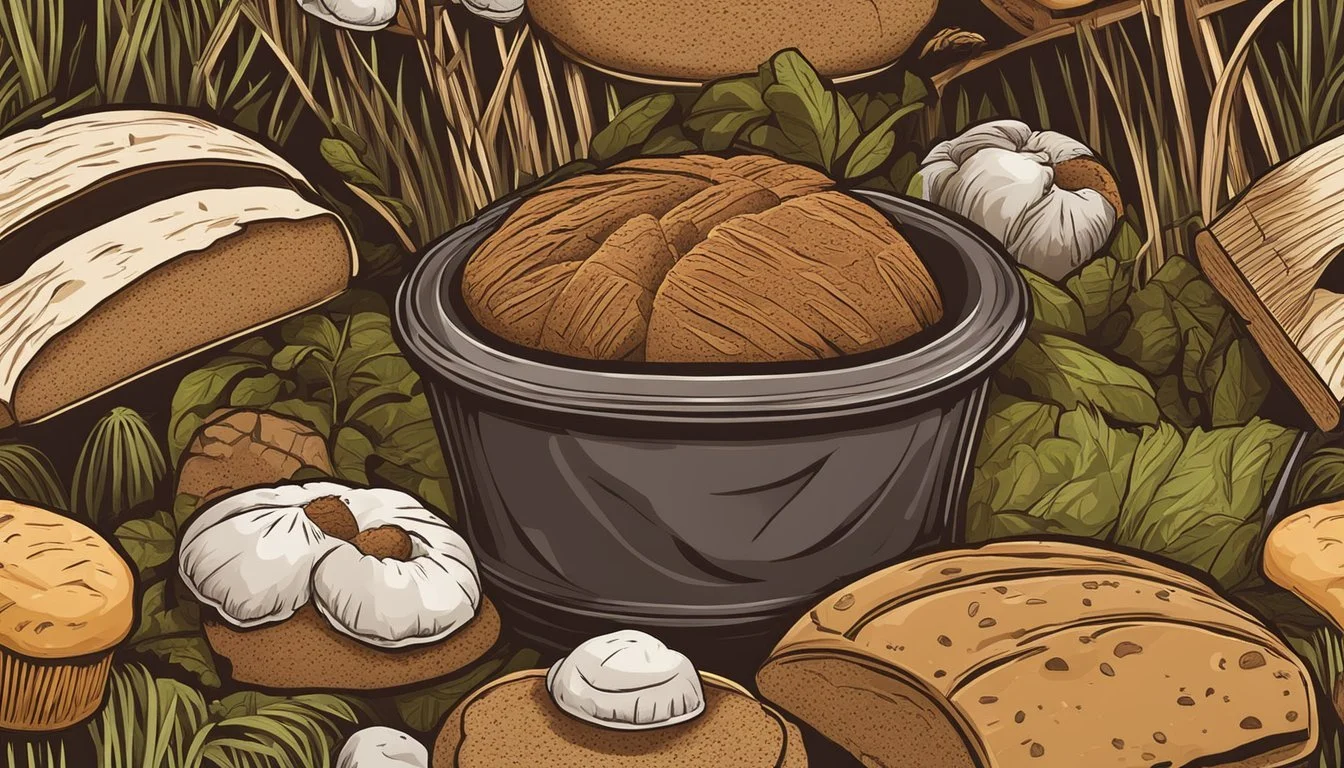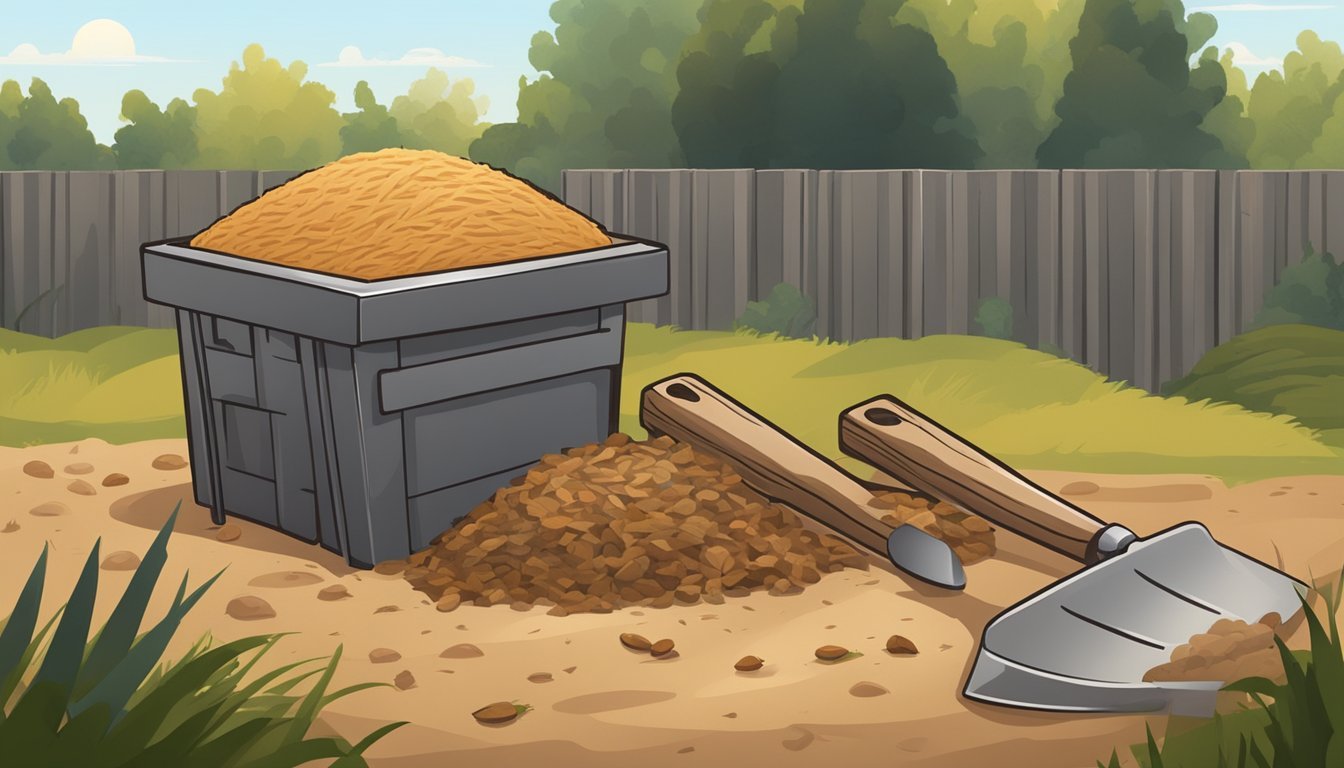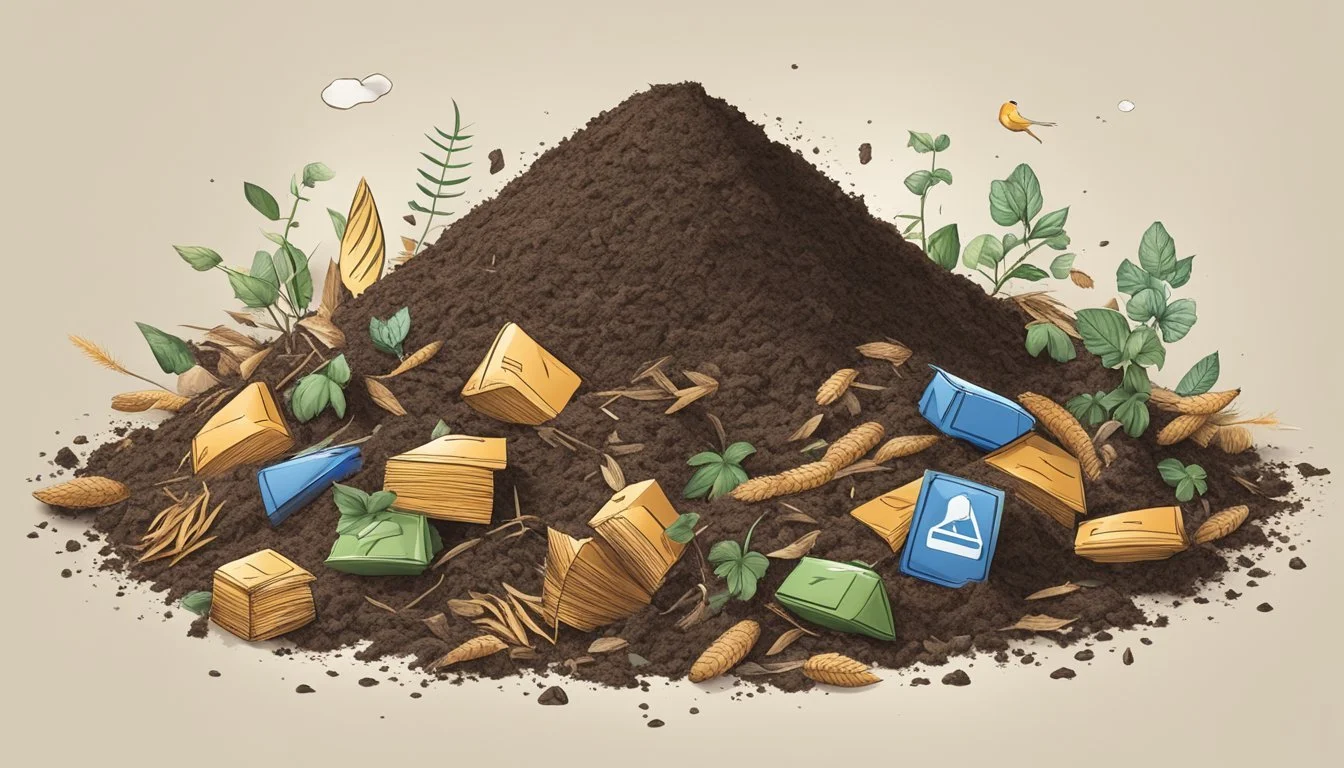Can You Compost Rye Bread?
Insights into Proper Bread Disposal and Composting Practices
Composting is an eco-friendly process that turns organic waste into a highly nutritious soil amendment for gardens and potted plants. It involves the decomposition of organic matter through the action of microorganisms, insects, and fungi in the presence of oxygen. Rye bread (What wine goes well with bread?), along with other types of bread, can be successfully added to a compost pile. This addition not only diverts waste from landfills but also enriches the resulting compost with diverse nutrients.
However, there are considerations to keep in mind when composting rye bread. Due to its organic nature, bread can attract pests if not managed properly. To prevent this, rye bread should be broken into small pieces and buried deep within the compost pile. This practice reduces exposure and potential attraction to animals and insects. Further, moderating the amount of rye bread introduced into the pile is crucial to maintaining a balanced compost, minimizing the chances of developing mold or creating foul odors.
Overall, rye bread can be a beneficial component of compost as it contributes to the nutrient richness of the finished product. Gardeners are encouraged to incorporate it, along with other green and brown materials, to achieve an optimal balance for high-quality compost.
Composting Basics
In the process of composting, balancing materials rich in carbon and nitrogen is crucial for effective breakdown of organic matter, such as rye bread.
What Is Composting?
Composting is the natural process of recycling decomposable organic matter, turning it into a rich soil additive known as compost. It involves the decomposition of materials into a substance that is beneficial for plant growth and soil enrichment. When organic matter like rye bread is added to a compost pile, it is broken down by microorganisms, which requires an optimal balance of carbon and nitrogen to be efficient.
Benefits of Composting Bread
Composting bread, including rye bread, introduces nitrogen to the compost. Nitrogen is essential for the microbes that break down the compost pile. By turning bread that would otherwise go to waste into compost, one can enrich the soil with additional nutrients, thus completing an eco-friendly cycle that also minimizes food waste.
Carbon-to-Nitrogen Ratio
For a compost pile to function properly, it needs the right carbon-to-nitrogen ratio (C ratio). Carbon acts as an energy source for the microbes, while nitrogen provides them with the proteins needed to grow and multiply. An ideal C ratio is typically about 30:1, meaning 30 parts carbon to 1 part nitrogen. Materials such as rye bread are considered "greens" and are high in nitrogen, hence they should be balanced with "browns" – materials rich in carbon like dry leaves or cardboard.
Material Type Carbon or Nitrogen Example Greens Nitrogen Rye bread Browns Carbon Dry leaves
Maintaining this ratio is essential for producing healthy compost and avoiding issues like odors or a slow decomposition process.
Preparing Bread for Composting
Proper preparation of bread for composting is crucial to ensure efficient decomposition and to avoid attracting pests. Composting bread involves determining the right types and carrying out a pre-treatment process to break down the organic material smoothly in a compost pile.
Types of Bread Suitable for Composting
Organic Bread: Breads made from organic grains without preservatives are ideal for composting. They decompose more quickly due to the absence of artificial additives.
Stale Bread: Bread that has gone stale but is free from mold can be composted. If it's only hard but not spoiled, it adds beneficial carbohydrates to the compost.
_Moldy Bread: While some composters avoid adding moldy bread, it can be composted since compost is a mold-friendly environment. However, one should ensure the compost pile is hot enough to destroy harmful bacteria and spores that could be present on the bread.
Pre-treatment of Bread
Before adding bread to a compost pile, one should take the following pre-treatment steps to prepare the bread for composting effectively:
Breaking Down the Bread: Shred or break the bread into smaller pieces as this will increase its surface area and speed up the decomposition process.
Mixing with Other Materials: Bread should not be the only component; it needs to be mixed with other organic materials. It’s advisable to follow the composting principle of mixing greens (nitrogen-rich materials) and browns (carbon-rich materials) to maintain the balance. Bread is considered a green material.
Burying the Bread: To prevent pests and reduce the chances of mold spreading, bury the bread under at least 10 inches of other compost material. This will also assist in quicker integration into the compost.
By following the above guidelines, stale or moldy bread can be turned into nutrient-rich organic material for composting without causing issues with pests or imbalance in the compost pile.
Building a Compost Pile
When constructing a compost pile, a gardener should focus on the proper layering of organic materials and maintaining a balance of nitrogen-rich greens and carbon-rich browns to ensure efficient decomposition.
Layering Techniques
One begins building a compost pile by setting down a base layer of brown materials, such as dried leaves or straw, to enhance aeration and drainage. Following the base, one should alternate layers of green and brown materials. The ideal thickness for each layer varies, but a general recommendation is a few inches. Consistent layering fosters the necessary conditions for microbial activity, which in turn breaks down the materials into compost.
Balancing Green and Brown Materials
In composting, the "greens" are nitrogen-rich materials like vegetable scraps, fruit waste, and green leaves. "Browns" are carbon-rich and include twigs, cardboard, paper, and dead leaves. An effective compost pile typically has more browns than greens, maintaining a ratio of about 3:1—three parts brown to one part green. This balance is crucial as it prevents the pile from becoming too wet or too dry, thus regulating moisture and temperature within the pile for optimal decomposition.
Addressing Common Concerns
In composting rye bread, the primary concerns focus on mitigating issues with pests, odors, and the bread's mold and decomposition process.
Preventing Pests and Odors
To prevent pests such as rodents from being attracted to rye bread in a compost bin, it's imperative to take precautionary measures. Use a compost bin with a tight-fitting lid or a tumbler that can be sealed adequately. Another method is to bury the bread under at least 10 inches of other compost material to mask the scent and deter pests. Add a balance of brown materials such as leaves or shredded paper to absorb excess moisture and reduce odors, which can attract pests.
Recommendations for keeping pests away:
Keep the compost bin sealed with a secure lid.
Bury bread deep within the compost pile.
Maintain an appropriate balance of green and brown materials.
Mold and Decomposition
Mold on rye bread isn't a disqualifier for composting; in fact, mold represents the natural breakdown of organic matter. However, excessive mold growth can be problematic, introducing unwanted pathogens to the compost. To ensure proper decomposition, break the bread into small pieces before adding it to the compost pile; this increases surface area and accelerates breakdown. Ensure the compost has adequate aeration; turn the pile regularly to introduce oxygen and distribute moisture and heat evenly, which promotes healthy decomposition.
Steps for optimal decomposition:
Tear or cut bread into small pieces to expedite decomposition.
Turn the compost pile regularly to improve aeration.
Using Finished Compost
Finished compost, rich in nutrients, provides numerous benefits to garden soil and plants. It should be mature and stable before application to ensure optimal results.
Assessing Compost Maturity
To determine if compost is ready for use, one must evaluate its maturity. Mature compost should be dark, crumbly, and have an earthy smell. If it gives off a strong, unpleasant odor or contains discernible food scraps or materials, it is not yet finished. A simple test is to place a handful of compost in a sealable bag for a few days; absence of foul odor upon opening indicates maturity.
Application in Garden Soil
The application of finished compost to garden soil is a delicate process that should be done thoughtfully. Here are the recommended steps:
Soil Testing: Before adding compost, testing the soil to understand its existing nutrient profile is crucial.
Mixing Compost: Incorporate the compost into the top 4-6 inches of soil to allow the nutrients to permeate effectively.
Quantity: A general rule is to use a half-inch to two inches of compost for general soil improvement.
Timing: The best time to add compost is before planting or during the growing season, which can provide a steady supply of nutrients as the plants develop.
Composting Methods and Equipment
Choosing the right composting method and equipment is crucial for the efficient breakdown of rye bread and other organic waste. Each composting system offers unique benefits suitable for different settings and scales of composting needs.
Traditional Compost Bins
Traditional compost bins are the most common method for backyard composting. They consist of a simple, often cubic, structure with a lid to deter pests and maintain moisture levels. To compost rye bread effectively in these bins:
Break the bread into small pieces to speed up decomposition.
Balance with "brown" materials like dried leaves to maintain aeration.
Compost Tumblers and Enclosed Systems
Compost tumblers are sealed, barrel-like containers that can be rotated to mix composting materials. They are particularly effective for managing odors and pests, which can come in handy when composting rye bread. Key features include:
Enclosed bins which retain heat, aiding in faster breakdown of bread.
A tumbler mechanism to ensure consistent mixing and aeration.
Vermicomposting Options
Vermicomposting involves the use of specific types of earthworms to break down organic matter. For incorporating rye bread into a vermicomposting system:
Introduce bread in moderation to prevent acidity which can harm the worms.
Ensure the presence of bedding materials like shredded newspaper to balance the composition.
Dos and Don'ts of Composting Bread
When composting bread, including rye, individuals should adhere to certain best practices to ensure a successful composting process.
Dos:
Balance: Bread is considered a green compost material due to its high nitrogen content. Balance it with brown compost materials—like leaves, straw, or paper—to maintain a healthy carbon-to-nitrogen ratio.
Manage Quantity: Add bread in small amounts to avoid attracting pests.
Preparation: Break the bread into small pieces to speed up the composting process.
Monitor: Keep an eye on the compost pile for any signs of unwanted pests or odor issues. If any arise, troubleshoot by adjusting the bread content and aeration.
Don'ts:
Avoid Oil and Fat: Bread containing oil or fat can slow down composting and attract animals.
Skip Dairy and Meat: Do not add bread with dairy or meat remnants as they can create odor problems and attract pests.
Omit Diseased Bread: Exclude moldy bread that might harbor harmful pathogens.
Preservatives Caution: Be wary of bread with high amounts of preservatives, which might hinder decomposition.
A table to encapsulate the dos and don’ts:
Do's Don'ts Balance with brown materials Add bread with oil, fat, or dairy Add in small quantities Compost meat-contaminated bread Break into smaller pieces Include bread with heavy preservatives Monitor compost health Compost moldy or diseased bread
Composting rye bread or any bread is a nuanced practice. It can contribute beneficial nutrients to the pile but requires careful consideration of accompanying ingredients and overall compost health to prevent problems.
Enhancing the Compost Process
In the context of composting rye bread, one must pay close attention to certain factors that significantly influence the decomposition rate and final quality of the compost. Properly balancing moisture and temperature and ensuring adequate aeration for oxygen supply are pivotal for optimal microbial activity.
Optimizing Moisture and Temperature
Moisture is crucial for composting; it aids microorganisms and bacteria as they break down organic matter. Rye bread should be moistened if dry before adding to the compost pile. The moisture content should be maintained like that of a wrung-out sponge—damp but not soggy. Temperature plays an equally significant role. It should be between 55-65°C (131-149°F) for rapid decomposition without harming beneficial microbes.
Ideal Conditions:
Moisture: Approximately 40-60%
Temperature: 55-65°C (131-149°F)
By integrating coffee grounds and grass clippings into the compost with rye bread, one can help maintain these conditions. Coffee grounds generate heat and attract beneficial worms, whereas grass clippings add necessary nitrogen.
Aeration and Oxygen Supply
Adequate oxygen is indispensable for aerobic bacteria to thrive, which are responsible for effective composting. Lack of oxygen can turn the process anaerobic, leading to unpleasant odors and slower decomposition. Turning the compost regularly—or using methods such as perforated pipes or tumbling the compost bin—ensures oxygen is available throughout the pile.
Aeration Strategies:
Turn the compost pile weekly.
Add bulky materials to create air pockets.
Use a compost aerator tool or fork.
Ensuring appropriate aeration not only supports the microorganisms but also helps manage the temperature, preventing the compost from becoming too hot and killing essential bacteria.
Alternative Uses for Stale and Moldy Bread
Stale and moldy rye bread need not be wasted. While composting is a viable option, there are several alternative uses for bread that has passed its prime. These methods not only help in reducing food waste but also add value to various culinary preparations.
Bread Crumbs: Stale rye bread can be easily transformed into bread crumbs. Once dried and ground, these crumbs serve as a versatile ingredient used for coating, binding, or as toppings. They add a pleasant texture to cakes, cookies, and other desserts, as well as provide a crunchy topping for casseroles and gratins.
Fillings and Toppings: Bread's absorbent quality makes it an excellent filler for meatloaf or meatballs. It can also be soaked to create a rich filler for stuffed vegetables or poultry. Additionally, seasoned bread cubes are perfect for toppings on salads or as a base for sweet and savory stuffings.
Bread Puddings and Other Desserts: Stale rye bread is the ideal candidate for classic bread pudding, where its texture absorbs the custard flawlessly. It can be used in various sweet dishes like pie fillings or even as a base for cakes and cereals when mixed with fruits and spices.
Feed for Animals: In some circumstances, stale or moldy bread can be beneficial as feed for animals such as birds or farm livestock, considering it's free from toxic molds.
Remember, it is crucial to ensure the bread is free from harmful molds that can have adverse effects when repurposed for any of the above uses.
Environmental Impact
Composting rye bread, like any organic matter, positively impacts the environment by reducing food waste that would otherwise end up in landfills. Landfills are significant contributors to methane production, a greenhouse gas that is far more potent than carbon dioxide. By composting rye bread, gardeners help to divert this waste, thereby reducing the production of methane.
The composting process turns rye bread into nutrient-rich soil, which can benefit garden soils significantly. Yard waste, such as leaves, and wood chips, can be mixed with bread during composting to create a balanced carbon-to-nitrogen ratio, which is crucial for successful decomposition. Adding rye bread to compost contributes nitrogen, an essential component that helps stimulate microbial activity within the compost pile.
Wildlife can be impacted by composting practices as well. When bread is left in open spaces, it can attract unwanted pests and wildlife, disrupting local ecosystems. However, responsible composting minimizes this risk as rye bread is broken down within a controlled environment.
Lastly, the practice of composting supports the recycling of organic materials, which both novice and expert gardeners approve. It is a non-commercial, eco-friendly method to enhance soil quality, promoting healthier plant growth without relying on chemical fertilizers.
By composting rye bread, individuals contribute to the reduction of food waste and provide a meaningful use for a product that might otherwise harm the environment. Moreover, the approach aligns with environmentally responsible practices championed by organizations such as Amazon, which supports sustainable initiatives.









